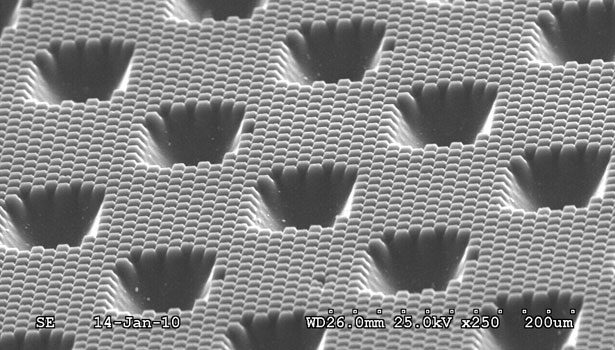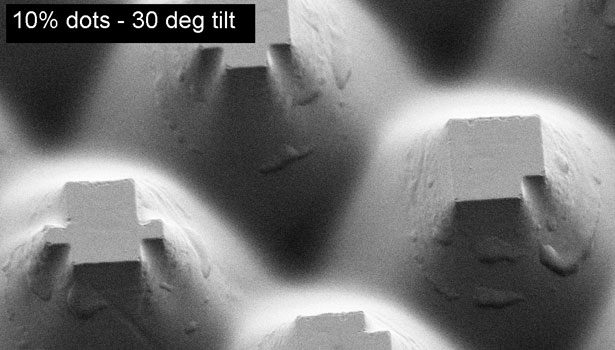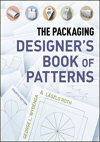Printing: Flexo
Reinventing the Flexo Work Flow




For years, the flexo printing industry has dreamed of a day without limitation. Until now, those limitations had never really been overcome. As an industry in general, flexo printers have done their best with the tools available. So what has been the real limitation? Photopolymer printing plates.
Unlike the metal plate that lithography uses or the engraved cylinders that rotogravure uses, the flexographic industry used a direct printing plate that had some fairly significant mechanical limitations. Those limitations generally boil down to two characteristics:
First, existing photopolymer plates do not deliver a printing surface that is consistently flat or even enough to allow fine screens and solids to print at the same impression level.
Second, fine dots on a photopolymer plate generally do not have the proper support to withstand impression and long runs. So flexo printers have just done away with them and for years we have lived with 2 percent or greater cutoffs. When we lost those very fine screens, we created a whole new batch on issues and lost a significant portion of the available color spectrum.
As it turns out, Kodak has built a better mousetrap with the Flexcel NX System. The Flexcel NX Plate addresses these issues and handles them in a way that improves plate life, transfers ink more efficiently, achieves fine screen imaging and delivers a plate with an absolute flat printing surface.
New Plate Technology
That true level plate surface means better control over impression and more importantly, less plate wear, because over impression is no longer an issue. Ink transfer to the substrate is also greatly improved when impression is a tool that can accurately and repeatably lay ink down evenly from .8 percent screens to 100 percent solids.
Because this system images at 10,000 dpi, and reproduces 1:1 from digital file to plate, you can actually image a .8 percent dot on plate. With that super fine imaging capability the 1 percent dot is back on the table, so the achievable color gamut is far broader than with other photopolymer plates. The expanded color gamut then allows the pressroom to look at more 4-color process in the workflow and fewer PMS colors. With more 4-color process comes the savings of less time spent in all aspects of daily pressroom operations. Increased color gamut is a giant step, but the biggest benefit of being able to image a dot at less than 1 percent is that now we can fill open areas on a plate and never have the hard edges that dropping out screens have created. With that super fine dot, we have total support across the plate, which, going back to the first point, also aids impression levels.
A 10 x 5 micron pattern that is imaged across the entire surface of the plate, DigiCap NX allows the plate to carry and deliver ink more efficiently for unmatched densities. In many cases we can now combine line and tone plates into one and still print very fine highlights and great solids without losing readability in bar codes, as an example. Another outstanding benefit of DigiCap is significant gains in density. It is not uncommon for printers to see gains of 20 points or more in density. Creating the additional density means bolder
color reproduction.
With 10,000 dpi imaging and DigiCap NX screening combined with the Flexcel NX plates’ level surface, you have all the tools to really create delicate images with the broadest achievable color gamut. The pressroom will reap the benefits through increased output, less make ready and in turn, less waste. Vastly improved ink transfer will save dollars in reduced ink usage through increased density.
Precision Color Graphics
(414) 209-0808; www.precisioncolor.com/
Looking for a reprint of this article?
From high-res PDFs to custom plaques, order your copy today!








